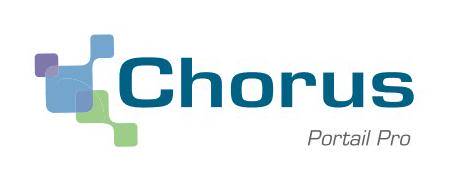Need to send e-invoices to the French government? France has established its own e-invoicing portal called Chorus Pro. In this article, we'll explain the process of delivering e-invoices to Chorus Pro with Peppol.
What is the Chorus Pro Portal?
Chorus Pro is a platform that allows companies to safely submit e-invoices to the French government. As a matter of fact, all suppliers to contracting authorities are now obligated to do so.
After submitting your e-invoice to Chorus Pro, you can send your e-invoice to a specific SIRET number. This SIRET number consists of a unique ID that solely contains numbers and represents a specific government agency (government, ministry or municipality).
As of May 2020, already more than 84 million e-invoices have been sent with the Chorus Pro platform and this number is growing each day.

"Can't I just send my PDF invoices by mail?"
No. It's no longer possible to send PDF invoices to French government agencies. The European governments recently mandated the use of electronic invoices for safety improvements.
In order to send invoices to the French government, you'll need to create electronic invoices in an established e-invoice format (Factur-X for France), which then have to be sent with - or through - the Chorus Pro Portal.
There are many reasons why you should start with e-invoicing. Learn more in this article.
How to send e-invoices to Chorus Pro with Peppol?
Imagine that you have to send 100 sales invoices a month. Where do you start? How can you successfully send e-invoices to the French government?
Follow these steps to send your first e-invoices to the French government:
- Make an e-invoice in your bookkeeping system / financial system.
- Create a Storecove account.
- Create a custom Storecove e-mail address under the 'How will Storecove receive the invoices you want us to send to your client?' section.
- Go to your e-mail system (Gmail, Outlook et cetera) and create a new e-mail with your e-invoice as an attachment. Make sure that your e-invoice contains the French SIRET number under the 'publicIdentifiers' section of your e-invoice.
- Send the e-invoice to the custom e-mailadres created in Step 3. For example: <company_name>@send.storecove.com.
- You're e-invoice is now send to the requested government agency! The route of the e-invoice is as follows: Your e-mail > Peppol network > Chorus Pro Portal > French government agency.
Nowadays nearly all government agencies are connected to the Peppol network. However, in the case that the government agency you're sending to is not connected to the Peppol network, we will send the e-invoice directly to a general SIRET number of the French government.
If you have any questions about this process, feel free to contact us.
Read our documentation for more information about sending e-invoices with Storecove.
Factur-X: The French E-invoice Format
Factur-X is the French e-invoice format that provides companies and government agencies with quick, safe and easy invoice communication. It's the same format as the German ZUGFeRD 2.1. invoice.
This new Factur-X / ZUGFeRD e-invoice format is not only expected to significantly reduce or completely eliminate billing costs by eliminating material and shipping costs, but will also be significantly more efficient in the future thanks to optimized processes.
Most ERP systems already support these recently established e-invoice formats. This allows you to easily create these invoices from inside your own bookkeeping system / financial system.
The following information has to be included in the Factur-X / ZUGFeRD invoice:
- The issuance date;
- Identification of the sender and the recipient;
- Invoice number based upon a continuous chronologic sequence or a serial numbering;
- The purchase order or the legal commitment number issued by the purchasing system of the public entity;
- The identifier code of the service in charge of the payment;
- The delivery date of the good or service;
- The designation and the quantity delivered;
- The unit price;
- The total amount net to pay, the total tax amount, the breakdown in tax amount by rate of tax;
- Eventually, payment terms or specific charge & allowance.
More information about sending e-invoices to the French government?
Contact us for more information or schedule a consult with one of our e-invoicing experts.
Read also:
- International e-invoicing: How to send e-invoices to other countries?
- The E-invoicing Status Per Country Overview
- Everything you need to know about e-invoicing
- PEPPOL Directory - Use this Tool to Search who's on Peppol
- Eneco about e-invoicing: "Less manual work, fewer errors, and faster payments”
- Storecove provides e-invoicing solutions for Australia, New Zealand and Singapore

Comments